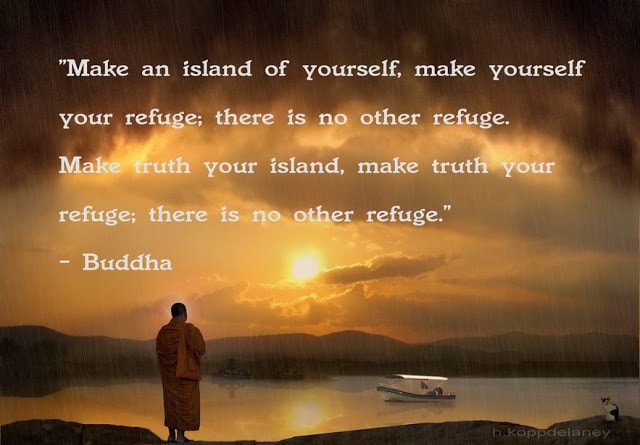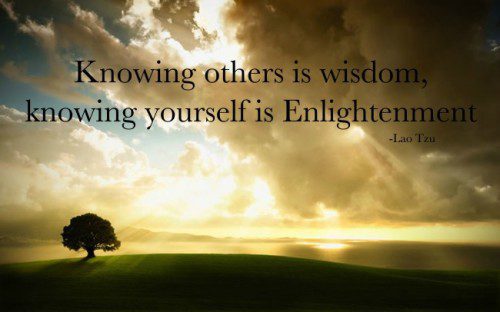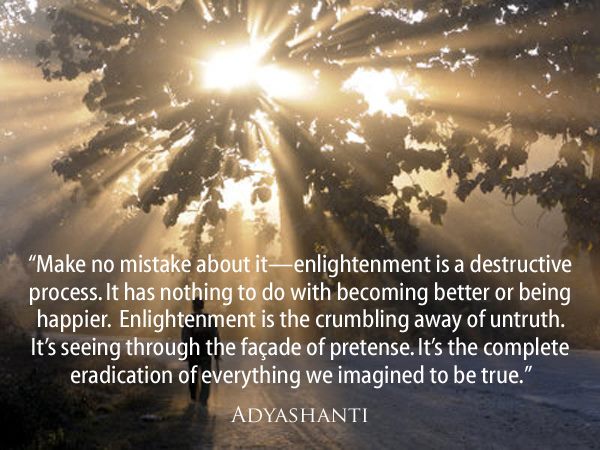There is a lot already said about Awakening, Enlightenment and Non-attachment by many ancient masters and teachers. This blog/website began about 8 years ago following a sort of sudden awakening while trance dancing in the jungles of Goa. My humble expressions of truth which I have gathered from various sources are all put together here onPsychedelic Adventure. That one experience propelled my life in an unknown direction, with some unseen intelligence guiding me along each step … while telling me to trust my intuition and surrender to what comes forth while following your passion in life … which for me is the quest for truth so i can bring more meaning to this earthly sojourn, my life.
After this awakening followed a series of realizations and magical discoveries about this exciting universe we are an integral part of. Magic is all around us, all we need is the eyes to see it. After I lost a dear friend quite suddenly, my life changed in a big way as it made me question everything. This was the first time I experienced the death of someone close to me, until then it was all theoretical. Now I begun asking questions pertaining to my own existence and what happens to us when we leave the physical body. On this quest to find meaning I came across many interesting things on the Internet. Some of these subjects I resonate with deeply and have blogged about quite extensively are Crop Circles,Shamanism, Orbs, Healing, Psychedelics and Altered States of Consciousness just to name a few.
The difficult part about waking up is that not everyone around you may be experiencing a similar shift in consciousness as you are. This can be a bit troublesome as the friends who once hung out with you suddenly stop coming over and you too feel like you have gone beyond the need for people being around you all the time and you truly value and appreciate those moments spent in complete silence. 🙂 You would rather be by yourself pursuing certain new found interests which bring more joy and happiness in your life than anything else you have previously known. If you have felt any of this, trust me you are not alone. There are so many of us feeling a storm stirring deep within our soul pushing us towards our imminent evolution, which is showing us a new way of living, in harmony with all beings we share this space with. A new vision of a new sense of self is emerging within each one of us tuned into our heart space … operating from a place of much peace and divine guidance.
Living consciously, while being sensitive to energies around us can be a gift and a curse at the same time as most emp
aths would agree. Like most labels, the label of an Empath may seem like a special title to inflate one’s ego but it really is an innate capacity within each one of us and there are ways to listen to that inner voice that guides us, which begins with silencing our noisy mind and clearing up the excessive mental clutter. To be in this world, yet detached from the illusions of the ego mind, is the path to true freedom which allows one to live more fully and in alignment with natural laws. Once we live our lives from a place of awareness, brand new realizations pour into our nascent consciousness from time to time … allowing us to free ourselves from the shackles of the egoic mind while tuning into higher realms of divine consciousness, the true essence of who we are.
One of the eternal teachings of Buddha is that of non-attachment … I came across this beautiful article by Matt Valentine on Buddhaimonia !
Attachment is the origin, the root of suffering; hence it is the cause of suffering.
– The Dalai Lama
You’ve probably seen or read something like it before on the Internet.
A beautiful image with a short quote that says something to the significance of “let it go” (if you don’t believe me, type “let go” into Google and look under the images tab).
And I’m not talking about the Frozen theme song, I’m talking about the idea of letting go of things in your life, whatever that may be.
But rarely is it actually explained how to actually “let it go”. More often than not it’s become no more than a slogan for happy living, with vague guidance at best.
What I do find interesting though is that most of us seem to realize intuitively how important it is to live without clinging to things, even if we’re not exactly sure how that’s supposed to happen.
But there’s a vast amount of wisdom in Eastern thought that can help us learn how to let go of the many things which bind us and keep us from finding peace as well as keep us from experiencing the limitless freedom that exists in our everyday lives. That’s where the teaching on non-attachment comes in.
The teaching on non-attachment, as described in Buddhist and Hindu thought, is often misunderstood- especially in the West.
It’s usually misunderstood as the detaching from all worldly things in a physical sense. Which most of us aren’t all that interested in doing (and, also intuitively, we feel is unnecessary). The common image of a monk or yogi living and meditating away from civilization doesn’t help that misconception either.
In fact, when Buddhism first came to China somewhere around 2,000 years ago by way of these reclusive and hermit-like practicing Buddhists, the Chinese apparently didn’t dig it all that much either. They didn’t see the point of removing yourself entirely from worldly activities and becoming these sort of recluses from society.
But they were very much interested in Buddhism in general, and would go on to spur one of the most significant reforms in Buddhist history- the birth of what’s called “Mahayana” (or “the great vehicle”) Buddhism.
The reason I mention this story is to illustrate why it can be so dang confusing to understand what’s meant by non-attachment in ancient Eastern thought. This is because technically there is a side of Buddhism that’s about becoming that mountain recluse or hermit and living by yourself for the rest of your life.
Fortunately, the Chinese realized the truth early on that such a way of living only aided in the path to realizing peace and was in no way a requirement.
The truth is peace and the ultimate freedom can be obtained right here within everyday life. So then if stripping yourself of all possessions and worldly responsibility isn’t the point of non-attachment, what is?
What is Non-Attachment?
The Buddhist teaching on non-attachment is ultimately about realizing the truth of yourself. That is, realizing that you’re an expression of the entire cosmos. That you’re in the cosmos, that the entire cosmos is in you in a very real and observable way, and that there is no separating the two (and everything that comes with the realization).
And the teaching on non-attachment is about living in such a way that you live without such obstructions that keep you from realizing this.
So, for instance, it’s not about not being able to get married, something which Chinese Buddhists began allowing which Indian Buddhists didn’t, it’s about not attaching yourself to your spouse or the concept of marriage.
This means living in a way that instead of keeping this image of your spouse in your mind and falling in love with that image, consequently running into problems when that image changes, you let them free and accept them fully for who they are in each moment no matter what changes.
In Zen Buddhism, when students complete their study they’re allowed to enter back into a “normal” life and do things such as marry and take jobs. This is because it’s understood in Zen that non-attachment isn’t about physical items, locations, and such, it’s about the ideas we occupy our minds with.
It’s about what we believe about ourselves and the world around us.
This means that you could lead a perfectly normal life on the surface, but from within live in a way that you don’t attach yourself to any of the things that are a part of your life.
This doesn’t mean you stop caring about them, on the contrary you appreciate them so much more because you’re ever-aware of that they won’t last forever.
So just as you can hold a picked flower in your hand, being well aware that the flower will wilt and die in a matter of days, taking in the smell and beauty of the flower, you can live your entire life savoring every moment knowing that in each moment everything can (and often does) change.
How We Attach in Our Everyday Life
Any belief that you’re this separate entity which exists detached from the rest of existence, and your attempts to cling to these ideas as well as your attempts to cling to expectations about the way the world is supposed to work, cause friction between yourself and the rest of the interconnected world and result in pain and the inability for you to find peace. Ultimately, in a nutshell, that’s what it all comes down to.
But what does this look like in your everyday life? Putting aside all the cosmos this and interconnected that talk, how can we begin to notice this in our daily lives?
When it comes down to it, all attachment originates with the ego. The ego, a construct which was built through years of conditioning and is in no way a “real” part of you at all, is what convinces you that you’re this separate entity disconnected from all other living and non-living things.
So how does this look in our everyday lives? Your ego is an image, it’s who you believe yourself to be. And when reality doesn’t match up to the image, friction happens and pain occurs. Pain caused by your attachment to the ego could come from:
- Not hitting your personal performance goals at work, leading you to question if your abilities are declining.
- Not performing as well during a basketball game with some old friends as you used to when you were younger, realizing you’re not as fit as you used to be and maybe no longer the athlete you thought yourself as.
- Finding out your spouse cheated on you and your dream of having a family and living the rest of your life with this great person consequently shattering.
Also, when life doesn’t = your expectations, the same happens:
- Losing a loved one and having to come to grips with the fact that this person who meant so much to you and who you’re used to having in your life is gone forever.
- Being fired from the job you’ve had for the past 10 years and thought you’d spend the rest of your life at.
- A co-worker whom you trusted stabbing you in the back to win a promotion over you.
- To see this more clearly, think about something that doesn’t surprise you. Think about a sandwich. Let’s say you really like peanut butter and jelly sandwiches and you’re used to having one every afternoon for lunch.
Provided everything goes as normal, you enjoy your sandwich and have a pleasant lunch. But if it turns out your husband or wife pranked you and threw some soy sauce in there when they made your sandwich (no wonder they offered to make it today…), you wouldn’t have a very pleasant lunch.
The surprise of the PB&J not adding up to your expectation is what caused you the pain, not that soy sauce was in it.
If you were to have eaten that sandwich like you had never had a peanut butter sandwich before in your life, without expectations, not only would the real thing have tasted better, experiencing every bite like the first time, but you wouldn’t have been disappointed when you were pranked with the PB&JS (peanut butter and jelly-soy) your spouse made for you because you would have had no expectation of how it should taste.
How to Let Go
The same basic ingredients apply in all methods of letting go, but there’s multiple ways to go about doing it. One very important point I want to mention with regards to the entire subject though is to not attach yourself to any one method of letting go.
It sounds odd that you can find a new attachment through trying to let go of all attachments, but it’s a very real thing to look out for. Don’t get mixed up thinking the finger pointing the way to the moon is the moon itself.
What this means is, first and foremost non-attachment is a state of mind. New attachments will always threaten you, so to live with the state of mind of non-attachment, to realize the importance of living in a way that you go with the natural flow of things and respect the impermanence of all life, is the basis of realizing non-attachment.
Again, there’s many ways to go about it all, but the first step is generally to begin working to identify the ego.
This is generally done through some form of meditation, particularly mindfulness as it allows you to observe yourself “silently” in a way and watch what unfolds and arises from within you. This can take time, and can be challenging, but the process itself is very rewarding.
To strive to live with mindfulness in each moment, whether you’re sitting on the meditation cushion, walking from one place to the next, or are at work, is to shine a light on your entire life and uncover the presence of the ego in each area of your life, even the furthest reaches that lay hidden deep in your subconscious.
To live with mindfulness is also to live fully engaged and yet unattached in that very moment. To be mindful is to be open and accepting of whatever may come in any moment, so mindfulness is a multipurpose tool in letting go of the many attachments we often hold.
But there’s another way to help us let go in our everyday life. To look deeply at those things in our everyday life, especially ourselves, is to realize not only the interconnected nature of all things but also the impermanence (that is, the fact that nothing lasts forever).
This is a technique I go into detail about in Zen for Everyday Life, but because there’s so many ways to use it I’d like to go over another way you can use contemplative meditation to begin helping you let go of the many things you cling to.
Meditating on the End of Your Life
Meditating on death sounded like a bit of a harsh title, but that’s essentially what this meditation is about. Keep in mind, you don’t have to go too deep here. If you do choose to do so though, be careful, you might not like everything you find (which is the same in all forms of meditation, but especially so for this). But I can promise you it will be healing.
This is just another way of taking contemplation, the act of looking deeply at a thing as far back as it will go, and using it on yourself to help you let go of the various attachments that inhibit you from finding peace.
To meditate on death, simply imagine it’s your time and everything that will come with it. You could be on a hospital bed, your personal bed, or somewhere else.
For best effect, imagine the process is pretty far along, and you’ve been looking back on your life. You’ll likely have to sit with this exercise for some time before things begin coming to the surface, but they will come.
Maybe you begin seeing flashes of your daughter, who you’ve fought with for years, come into your mind. You won’t always know why, but by focusing your mind on this near-death event certain things will arise naturally.
Part of this process can be active with contemplation, trying to actively imagine what kinds of things you might regret, want to have done differently, or feel relieved you can finally let go of, and another part of it could be more passive by simply thinking about the situation to yourself for a moment and then proceeding to sit and follow your breath with mindfulness and then acknowledging whatever thoughts arise as a part of that.
However you decide to do it, meditating on the end of your life, the entire experience in as much detail as you can possibly imagine, can be a powerful and highly beneficial exercise.
The Power of Letting Go
What is it like to let go completely? You’ll have to find out for yourself, but there’s a few major changes that will occur as a result of you learning how to overcome all attachments and live freely:
1. You’ll see the beauty in all of life and experience it in its fullness without any “distortion”.
2. You’ll be completely free in each moment and in the truest sense, no longer chained down to attachments.
3. You’ll find peace through having learned how to let go, stop causing friction to your being, and ultimately expressing your true nature.
4. You’ll gain the ability to adapt to any and all changes and keep your peace of mind.
5. You’ll find a great sense of joy in every moment and realize life as one great big adventure because you’re no longer held down by anything.
If you want to learn how to let go and live truly free in each moment, Zen for Everyday Life is a great resource that can begin you on the path and equip you with the tools you’ll need. You can get Zen for Everyday Life and learn more about the book by clicking here:
Get Zen for Everyday Life: How to Find Peace and Happiness in the Chaos of Everyday Life
The topic of letting go and non-attachment is surely a big one, far larger than any single post could cover, but I hope this has helped move you forward in some way towards greater freedom in your everyday life.
Reference : Let Go & Find Peace



